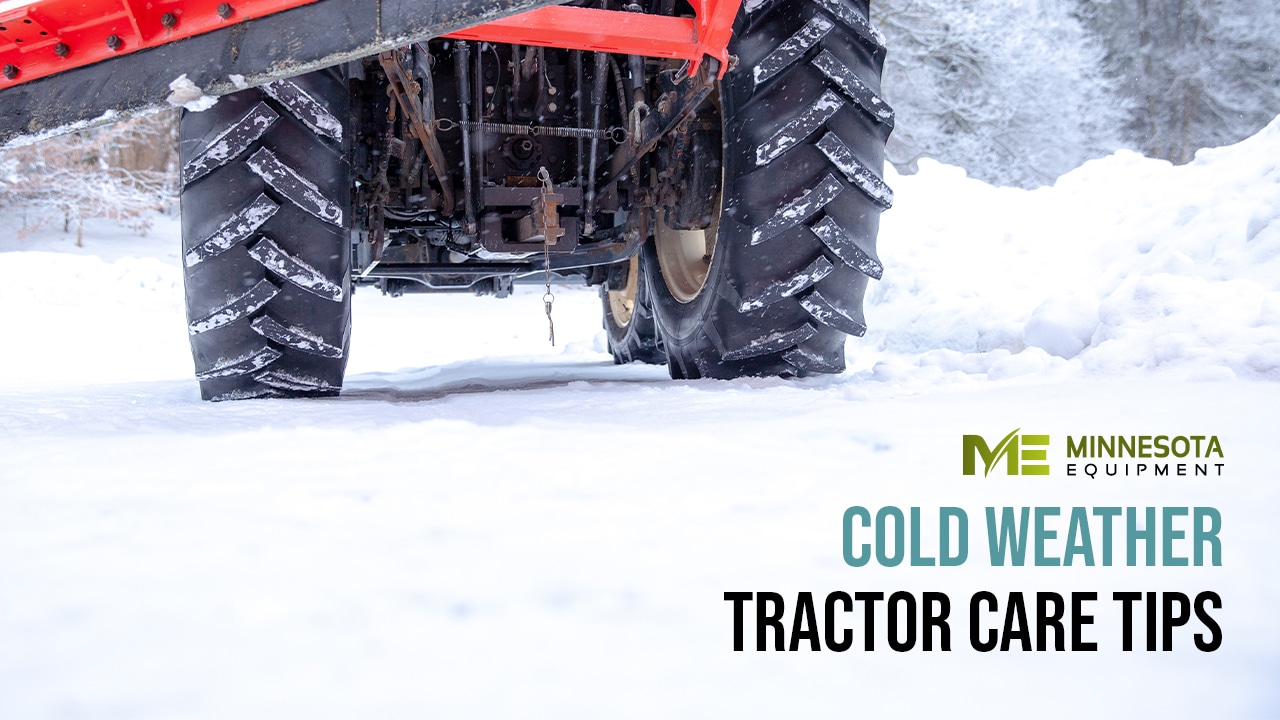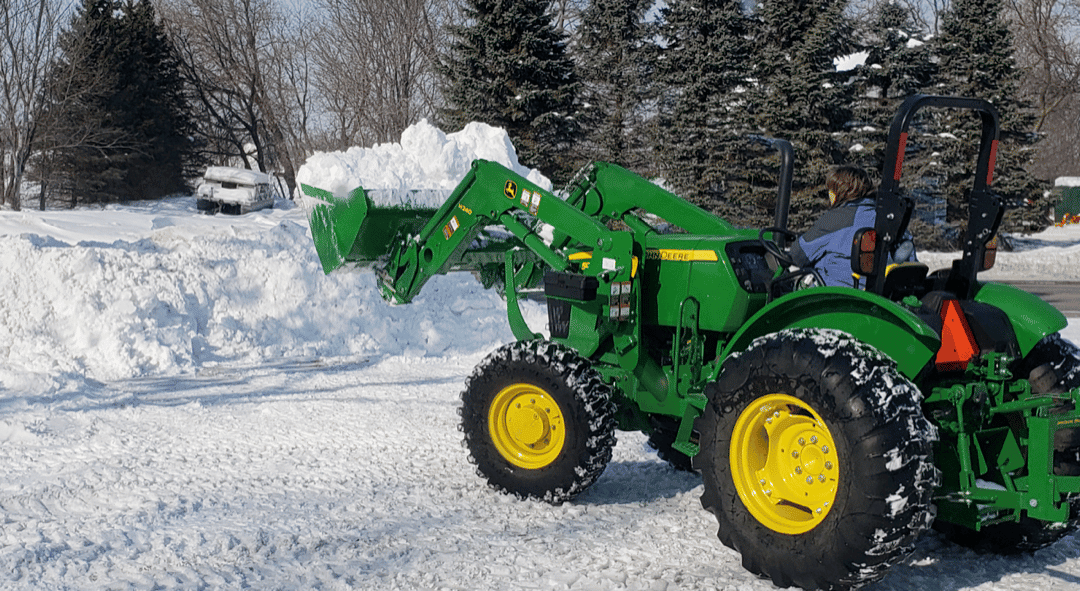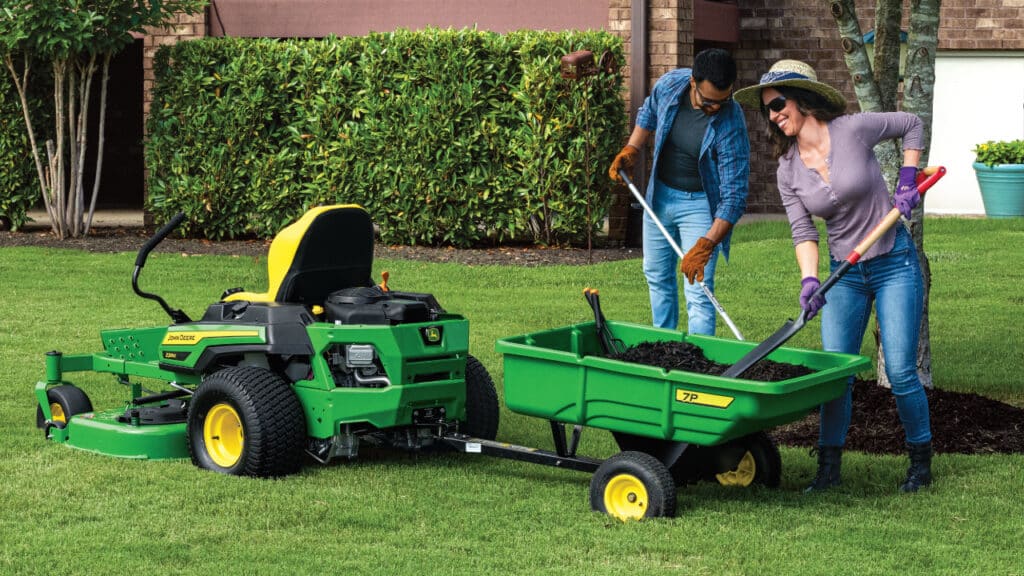
Get the most from your machinery all winter long
John Deere diesel tractors are built to get the job done in all kinds of weather, including brutal Minnesota winters. Whether it’s clearing snow, farm chores, habitat management or a thousand other tasks, they’re up to the challenge.

That being said, following a few simple tips can help you get the most from these hard-working machines in cold weather. As always, if you have any questions or would like assistance with service, winterizing or other machinery maintenance, contact your friendly neighborhood John Deere experts at a Minnesota Equipment near you.
1. Be Fuel Smart
The first step in getting the most from your tractor in winter means filling it with the right fuel for maximum performance. At low temperatures, diesel fuel forms waxy, solid crystals that impede flow and cause fuel filters to plug. The process is known as “clouding” or “gelling up,” and the temperature at which it starts to happen depends on how the fuel was refined.
To avoid problems, use winter-grade fuel (No. 1-D in North America) when temperatures fall below 32 degrees Fahrenheit. This fuel has a lower cloud point than summer fuel (No. 2-D), as well as a lower pour point—the lowest temperature at which fuel moves.

In general, it’s best to switch over from summer to winter fuel as the climate cools in late fall, and then back to warm-weather fuel in the spring. If you need to keep #2 summer diesel over winter, fuel additives such as John Deere Premium Diesel Fuel Conditioner (winter formula), which contain anti-gel chemistry, can decrease the fuel cloud point by 18 degrees Fahrenheit.

Keep in mind, when running biodiesel blends, wax formation can occur at warmer temperatures. When temperatures drop to 41 degrees Fahrenheit, start treating biodiesel fuels with John Deere Premium Biodiesel Fuel Conditioner (winter formula). Use B5 or lower blends at temperatures below 32 degrees and use only winter-grade petroleum diesel fuel at temperatures below 14 degrees. By performing this cold weather tractor care, you will extend the life of your John Deere and make sure it starts up immediately in the spring.
2. Heat That Block
Tractor engine block heaters are popular options in cold climates like Minnesota’s. By warming the engine coolant, block heaters are a tremendous aid in cold-weather starting. Note: Glow plugs also aid cold-weather diesel engine starting by heating the air in the cylinder before cranking and fuel injection commence. Make sure glow plugs are installed and functioning for optimum cold-weather starting.
3. Check Your Fluids
Owner’s manuals aren’t light reading, but they provide a wealth of information—including recommendations on engine oil and coolant for cold weather. Follow the advice on choosing seasonal-grade viscosity oil and the proper concentration of low-silicate antifreeze to keep your tractor in top shape all winter long.
4. Take Charge
Cold weather makes the battery work up to twice as hard to start your tractor’s engine, so be sure yours is up to the job. Load-test the battery to check its condition and capacity. While you’re at it, inspect and clean battery terminals and confirm connections are tight.
5. Timely TLC
Plenty of tractor parts benefit from a little extra attention in winter. For example, rubber tires, hoses, and belts become more brittle in the cold, so inspect these components carefully for cracks and dry rot. Also, check and fill the tires until they reach the proper pressure recommended on the sidewall. It is all an essential part of cold weather tractor care.
6. Warm-Up
Allowing an engine to warm up prior to use is always a great idea. Winter is no exception since operating with cold fluids puts more wear and tear on the equipment. Be sure to let all engine fluids warm-up at low idle before cranking up the RPMs and getting to work. Five to 10 minutes is a good general rule.

7. Top That Tank
Condensation in the fuel tank is a cold-weather performance killer, capable of causing as many headaches as gelled fuel. Keeping your tractor’s fuel tank full reduces condensation build-up, so top off the tank after each use—and consider a diesel fuel additive recommended by the manufacturer or your local John Deere experts at Minnesota Equipment.


 MyME
MyME



